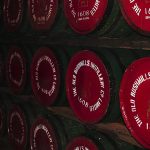What is Whiskey Made Of?
Whiskey is one of those drinks that people from all over the world enjoy. It’s refreshing, tasty and a lot of people like it because it brings a marvelous taste and incredible scent. It really is amazing and there are lots of different types of whiskey to try out, so many in fact, that you could be tasting for years and never get near tasting them all. But you might wonder, what is whisky made of?
The process of making whisky and the ingredients used are very simple and easy to understand, and it hasn’t changed that much over the past 200 years. Learning what is whiskey made of will give you a better understanding when it comes to the manufacturing process, how it’s created, and how or why people enjoy it.
What Are The Whiskey Ingredients?
Whiskey is one of the simplest drinks out there if you think about it. There are only a few main ingredients, so it’s not extremely complicated, at least not the way some of the marketing would make you believe it is. Whiskey requires barley, water and yeast. While modern technology has changed things a bit when it comes to the manufacturing process, the whiskey ingredients are pretty much the same. Now that you know them, it’s also a good idea to understand how whiskey is made and that will give you a pretty good understanding of the process from ingredients all the way to consumption (the best bit).
One thing to note is that the location where that whiskey is made will have an influence on what ingredients are used. Some regions like Indiana, Maryland or Pennsylvania tend to have lots of limestone, so the water has carbonates and that will alter the flavor.
The difference between Tennessee Whiskey and bourbon is that once the spirit is distilled, the former is filtered via sugar maple charcoal. Average bourbon will not go through that, so you can see some major differences right from the start with this, which is something you need to keep in mind here.
Rye Whiskey for example needs to be distilled from at least 51% rye. Traditional whisky or “scotch” is made from malted barley, whereas bourbon is made from distilling corn.
Steps Needed To Make Whiskey
Malting The Grain
You will need to malt the grain into a gristmill. Then the meal ends up mixed with water, and it will be cooked to remove the cellulose walls. Malting begins at this time, and then it soaks into water to become saturated. It will get sprinkled and spread out with water, then it sprouts. You will need to dry the barley with hot air generated from a kiln.
Mashing
At this point you will need to combine malted barley with water and cooked grain. The starch is converting into sugars here, and after multiple hours of mashing, you will receive a very thick liquid, rich in sugar which is named mash.
Whisky Fermentation
After the resulting mash is cooled, it’s sent to large tanks where the distiller needs to wait for the fermentation process. Normally it’s around 48 hours, sometimes a bit more or less based on the situation. Keep in mind that the fermentation time will bring in a very specific taste, which is why some distilleries choose to keep the mash in fermentation vessels bit more as needed.
Distilling Whisky
Distilling is the next process, and it’s performed in dedicated stills. Here steam will enter the still at the bottom and then the liquid enters from the top, slowly dripping via the plates and then the alcohol is condensed back to a liquid. You will need to distill at a certain temperature, otherwise you will alter the taste. If your whiskey has 95% alcohol for example, there are no congeners and that means there’s no flavors. Having too many congeners can be a bad thing too. That’s why you must find the perfect blend of alcohol, congeners and water. It takes a lot of experimentation, but most distilleries have this nailed down (thankfully!).
Aging Whisky
Lastly, we have the aging process. Most distilleries will choose to add water to keep the alcohol content lower, something around 50 to 60%. The aging process takes place in dry, warm conditions. The idea is to increase the alcohol content and lose water naturally. Scotch on the other hand is aged in wet and cool conditions so it can have less alcohol and more water.
Conclusion
It’s interesting to see what is whiskey made of, and you can easily understand just how much work goes into preparing it. Add to that the fact that many distilleries constantly experiment with new distilling options, and you will understand why lots of whiskeys have their own taste. They play with the distilling and aging process to create their own brand, and the results are nothing short of staggering!






